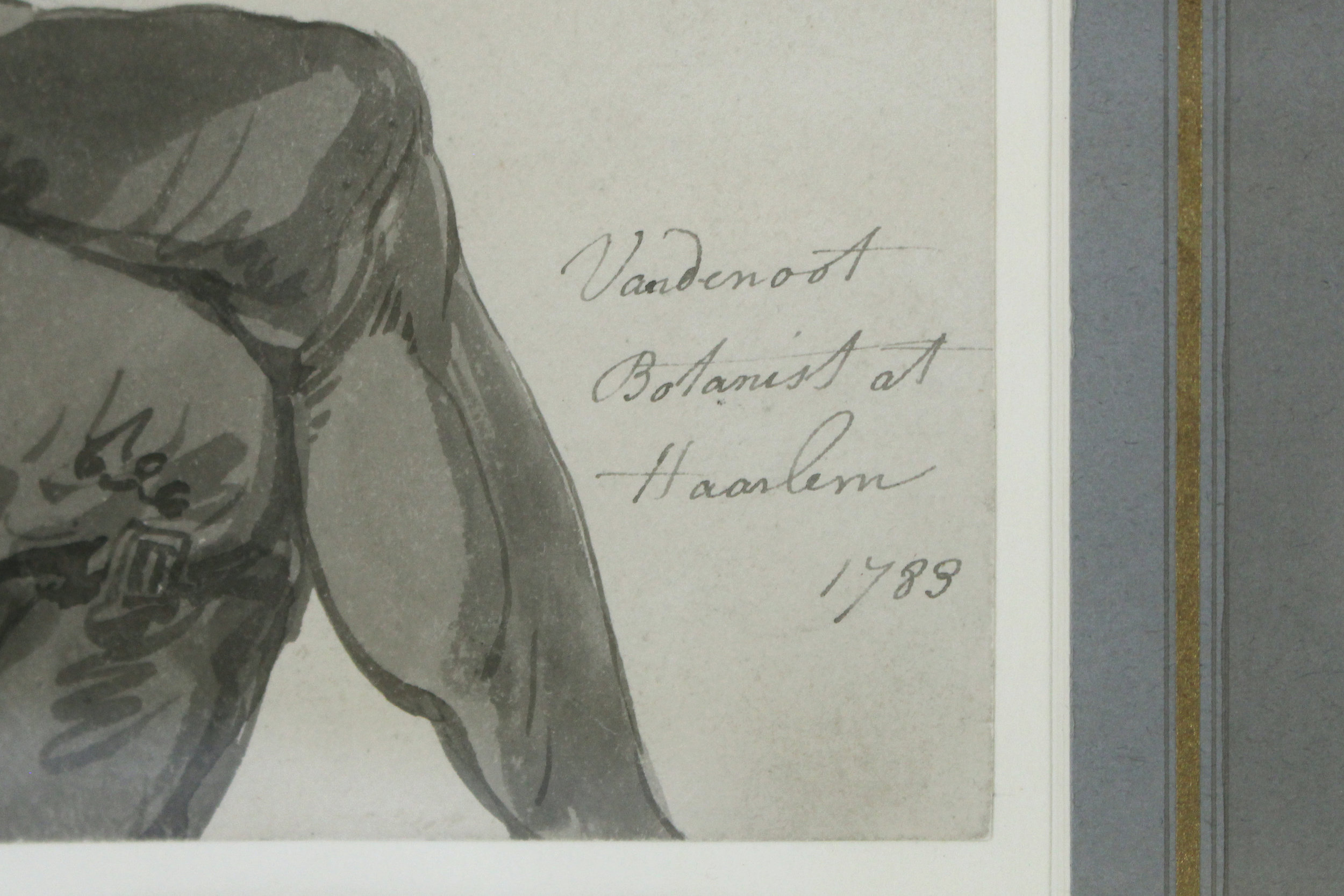Thomas Rowlandson (British 1756-1827)
A Study of Herren Van Den Noot, the Botanist
pencil, pen, grey and brown ink and watercolour, inscribed and dated lower right "Vandenoot Botanist at Haarlem 1783"
Provenance: Morton Morris & Company Ltd., London
Size: 10 ½ x 7 in (with frame 24 ½ x 18 ¾ in)
ZJ19682
SOLD
This item is no longer available. Please contact us to inquire about similar pieces.
uno@langmann.com
604 736 8825 or 1 800 730 8825
Thomas Rowlandson was one of the best recognized caricature artists of the Georgian Era. Considered his most artistic work are the careful drawings of his earlier period, in contrast to the exaggerated caricatures of his later life. These superb works from his prime illustrate the vitality of the sitter’s personality, coupled with the artist’s flair for illustrating human weakness. Many of these early works include caricatures from the medical profession, developed through his friendship with John Wolcot circa 1778. During this time he also illustrated books of physicians and quacks, and later in life produced caricatures on medical themes. He was noted for his political satire and social observations, although his work includes illustrations for novels, joke books, topographical works as well as erotica which was often censured.
Born in London in 1757, the Rowlandson family moved to Richmond in North Yorkshire when Thomas was a baby. As a child he was able to attend the Dr. Barvis School in London, likely with the financial assistance of his wealthy widowed aunt Jane. The school had a good reputation and was also attended by the son of the politician Edmund Burke. Rowlandson was known to draw humorous images of his classmates and teachers, including in the margins of his textbooks. He then attended the Soho academy where he may have had drawing classes. In 1772 at 16 years of age, he began studies at the Royal Academy London where his spent a total of six years including two in Paris. His first years of instruction in Paris were in a drawing academy to learn figure composition and further his training in caricatures. When he returned to London he began his classes at the Royal Academy, then based at Somerset House. He was by all accounts a promising student, exhibiting and winning medals. He made numerous tours throughout the Continent where he enjoyed sketching and documenting the characters he saw.
Upon his aunt’s death Rowlandson received a large inheritance, but unfortunately used this to fuel his taste for gambling - he was known to sit at the gaming-table for 36 hours at a stretch. Eventually he fell into poverty and it seems that his caricatures became his main source of income. He had originally worked as a portrait painter but his designs and caricatures provided more steady income. He was employed by Rudolph Ackermann, the art publisher who in 1809 published The Schoolmaster’s Tour in Poetical Magazine, with illustrative verses by Dr. William Combe. This series of works became Rowlandson’s most popular and the issue was followed by further collaborations with the same author and publisher such as the Syntax Series, engraved by Rowlandson. He also collaborated on many other magazines and books including works with Tobias Smollett, Oliver Goldsmith and Laurence Sterne. His designs usually followed a specific process beginning with drawing in reed pen, which was then coloured. This would be etched by the artist on copper and finally acquainted, often by a professional engraver. The final works would be coloured by hand.
Many of Rowlandson’s most famous works were owned by his friend and patron Matthew Michell of Grove House in Endfield, Middlesex. Upon Michell’s death in 1818 the contents of the estate were sold at auction in 1818, which included hundreds of Rowlandson’s original paintings. Rowlandson died at home in London in 1827 after a prolonged illness. He was 70 years old.



